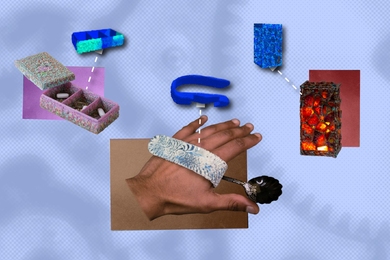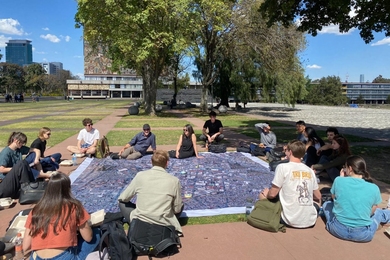Several teams within the Human Resource Practices Design/Development Project are finalizing recommendations for changes and improvements in recognition and rewards, new-employee orientation, and classification and compensation.
HRPD was chartered in June 1996 by President Charles M. Vest to "look into the issues and challenges of our changing work environment." In October 1996, an 11-member design team proposed a plan for developing new programs in several human-resource areas. The design team then disbanded, and the Human Resource Practices Development team (HRPD) convened in February 1997 to pick up where its predecessor left off.
This year, final recommendations from six project teams under the HRPD umbrella (including the four discussed below) will be delivered to Vice President for Human Resources Joan Rice. Since October 1997, the 30 team members have been devoting 20 percent of their time for varying terms. All work within the scope of the project will be concluded in January 1999.
RECOGNITION AND REWARDS
After contacting more than 3,000 employees in departments, labs and centers throughout the campus and receiving input from more than 1,000, the Recognition and Rewards team has developed a series of options for showing appreciation to employees who make a significant contribution to the Institute.
The team has just delivered its recommendations to Ms. Rice, HRPD's sponsor, and will soon present them to the Reengineering Steering Committee.
The recommended multilevel program is designed to formalize current MIT recognition and reward practices, provide consistency and build an infrastructure that managers, supervisors, peers and customers can easily use to acknowledge the work of employees. (Team members have defined "recognition" as an acknowledgment and a "reward" as something tangible.)
Designed to operate at both the local and the Institute level, the proposed program provides the flexibility and consistency that employees stressed as important in their survey and focus group responses. The team's report also includes a cost analysis, recommendations for the nomination process and program administration, and guidelines for communicating the program and measuring its success.
ORIENTATION
The eight-member Orientation team is preparing the first draft of its recommendations for a comprehensive orientation program for new employees.
The program will not replace local orientation efforts in departments or the presentation by the Benefits Office. Instead, it will offer an orientation program to those areas that currently do not have one and will complement current programs to help new employees understand MIT's organizational structure, culture and resources.
The final recommendations will be based on interviews, surveys and focus groups with MIT employees, as well as best-practice research at six universities and 13 companies. The team also collected web site data from university programs in North America and studied management/human resource journals dating back to 1980.
Team members spoke with employees in MIT departments with and without orientation programs and interviewed a group of newly hired employees. This input proved very helpful in identifying the critical components of an orientation program, as well as providing ideas for program support and delivery.
Best-practice research revealed that effective orientation programs contribute significantly to an organization's bottom line by reducing turnover and making new employees more productive. These programs highlight the best aspects of an institution's culture, services, mission and value.
PERFORMANCE MANAGEMENT
How well does the performance-review process work and how might it be improved? The Performance Management team is soliciting answers to these questions by gathering opinions from general and departmental administrative staff.
Having scheduled their research to coincide with the performance-review process for different payroll categories, the team is asking employees for information on their performance-review experiences, comments on what has proved beneficial and suggestions for improvement.
Administrative staff members are invited to participate in a general focus group tomorrow (April 30) in Rm 10-250 from noon-1pm, and to respond to a survey posted on the web until May 6 at
In addition, team members are analyzing data from a February support staff survey, to which approximately 12 percent of the staff responded.
The team is also conducting research on coaching. In addition to developing a coaching profile to help in assessing good coaching, team members are collecting information from MIT employees about their coaching experiences and researching best practices at other organizations. The conclusions they reach will provide the basis of their recommendations for methods, guidelines and tools which supervisors can use to help employees improve job performance.
CLASSIFICATION AND COMPENSATION
The first set of recommendations for changes in job classification and compensation was delivered to Vice President Rice last fall, and discussions on how to implement such changes are now underway. The teams working on the project (which is being handled by Nora Costa, manager of compensation in Personnel) are being assisted by an outside specialist in classification and compensation structures.
A version of this article appeared in MIT Tech Talk on April 29, 1998.





